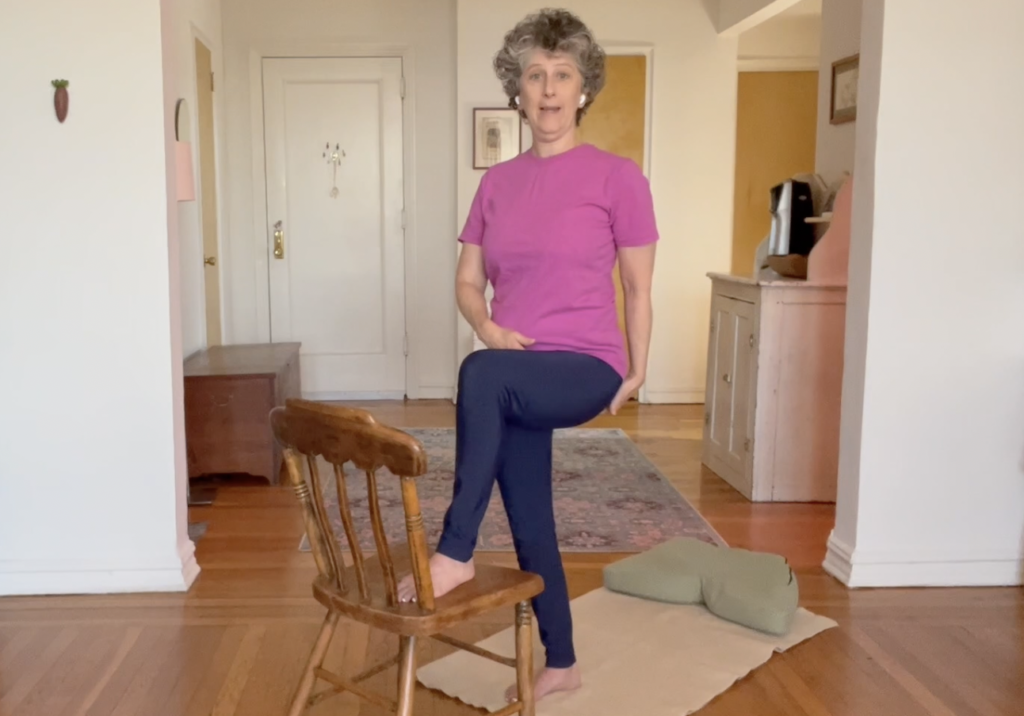
Mobility first, flexibility second
Did you end up deepening your meditation practice during the COVID pandemic? Hello! Me too. Sitting for at least 30 minutes every day posed some surprising challenges for me, and I’m a person with lots of body knowledge and a long history of consistent practice with my body.
I’m a body expert and lifelong somanaut, so on the outside, my meditation position looks pretty good. But on the inside – yeesh!
I have nerve damage in one hip joint, shoulder pain, sciatica or some kind of radiculopathy in my sacrum and left leg…I’d figured out how to care for all of these things before, but sitting that much brought it all back and forced me to pay more attention.
I couldn’t “just do it.” My mind could not settle if my body was in distress. So I had to up my “body compassion” practice and I’ve made some discoveries that I’d love to share with you in case you too are struggling! Even if you don’t “sit zazen,” maybe you’d just like to be able to sit on the floor or ground more comfortably.
Getting close to the earth is wonderful. This series of posts and videos will help you with that too.
Caveat: I am not a meditation instructor. I’m a body expert, but new to consistent daily meditation practice in a particular tradition. I’m a learner just like the rest of you.
When I checked in with my students and my fellow sangha members, I found that the number one complaint is tight hips, and the number one request was for hip opening stretches.
“I can’t sit for more than 30 minutes without having screaming back pain and numbness in my feet and legs. If I’m on retreat, I just sit in a chair, but even that is uncomfortable after awhile.”
There are two main points I’d like to make at the beginning of this mini-series on hip flexibility:
1. Body compassion and self acceptance are core values for me, not optional.
Meditation is about awareness through our bodies right now in this moment, not distortion of our bodies. When we stand out as different from others in our physical abilities, we deserve acceptance and care not just from ourselves, but from our communities. I’ve practiced meditation lying on my back, lying on my side, sitting in a chair, and many other ways at different points in my life. Sometimes people look at me askance, but often I get a few rogues joining me in the back of the room too.
Maybe you are not bipedal, in which case this weeks video won’t help you. I feel humbled by the amount of work we need to do to make meditation spaces truly accessible to all, and am just beginning to look at this issue.
2. Mobility is a precursor to flexibility and a better precursor to prolonged stillness.
I was shocked when I saw the number of extreme hip flexibility videos out there in Youtube land. The benefits and drawbacks of what’s called “static stretching” are complex, and the jury is still out. I think it’s absolutely essential, regardless, that you are able to retain mobility potential at the end of your muscle length, and that you should never force your body into a position that it’s super clumsy to get out of.
I recommend a short, fun exploration of mobility, coordination, and joint range before meditation, and that’s what this weeks video is all about. Deeper stretching is something I’d recommend after more rigorous physical activity.
Would you be interested in a live course on opening up your hips for meditation? Let me know! I’d love to do one.
